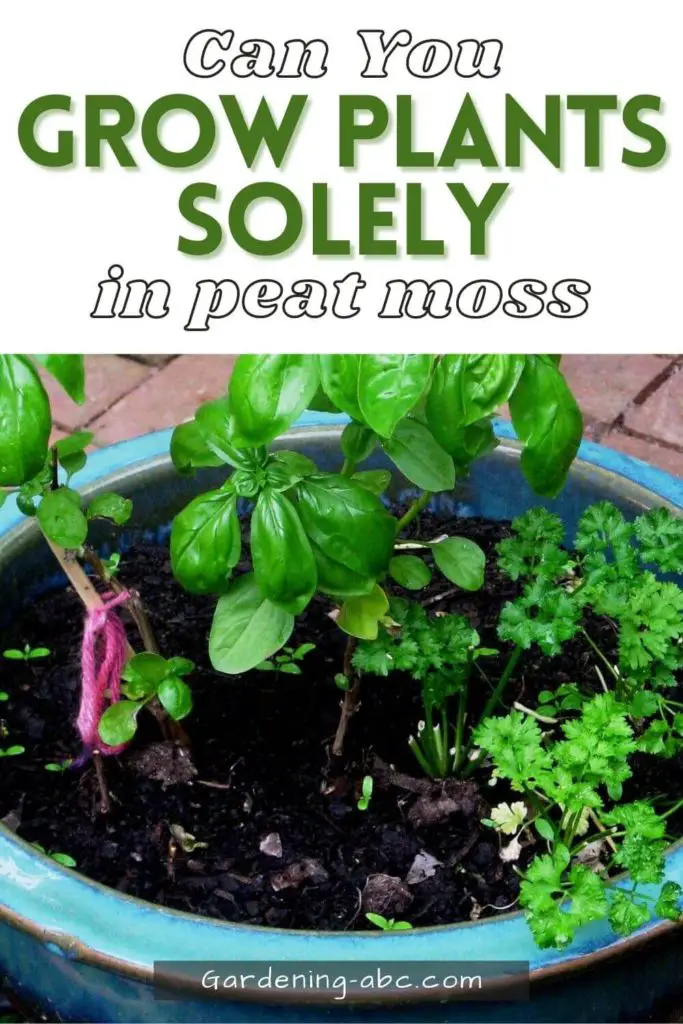We use affiliate links to run our site. When you buy through links on our site, we may earn an affiliate commission, without any added cost to you. Learn more
People often get confused between peat moss and potting soil in general. Are they the same? Is there any difference between peat moss and potting soil? Can you grow plants solely on peat moss? This post will clear those doubts. I will also tell you how to use peat moss in potting soil.
Can You Use Only Peat Moss to Grow Plants?
You can use only peat moss to grow plants only if the nutrient requirements of the plant are pretty low, and that too for some time only.
Peat moss doesn’t have much nutrients in them, although it can hold onto nutrients. So if want to grow plants in peat moss only you have to add fertilizers from outside.
Another issue that will pop up when you start growing plants in peat is the chance of rotting roots. That is because although peat moss can hold on to water it doesn’t allow aeration to the roots like coco coir.
So to avoid the root rotting problem you have to add some perlite or sand to peat moss. Perlite is sterile in nature, but if you are adding sand don’t forget to sterilize it before use.
Peat moss is also highly acidic. So make sure you only select plants that love this kind of environment or reduce the soil pH by adding some amendments.
Mixing Peat Moss With Potting Soil:
Most potting mixes are either soil-based or soilless mixes, and peat moss can be used in both types of mixes.
Soil-Based Potting Mixes:
soil based potting mix is often also called potting soil. As the name suggests the main ingredients of any soil based mixes are soil. Other ingredients can be fertilizers, peat moss, perlite, vermiculite, coco coir etc.
Soil based potting mixes are more of a supercharged garden soil. The only drawback of these mixes is they can be quite heavy and can create probem in container gardening.
Soilless Potting Mixes:
Here we do not soil what so ever. The main ingredients are coco coir, peat moss, perlite, vermiculite, etc. Soilless mixes are light, so it is very useful for containers that you don’t want to get too heavy. If you to know more about soilless mixes and how they work, check our earlier post.
Most potting soils you buy in a garden center are peat moss based potting mixes. These peat moss based potting mixes also have perlite, vermiculite, and other added nutrients. Sometimes a wetting agent is added to those mixes, as dry peat moss will initially repel water.
Why Use Peat Moss With Potting Soil:
Here are some of the main reasons why gardeners mix peat moss with potting soil:
- Peat moss improves soil drainage and prevents soggy soil and root rot problem.
- They can easily lower the soil pH for plants blueberries, which thrive in acidic conditions.
- They have a very slow decomposition rate and quite resistant to compaction.
- Peat moss can hold onto water and other nutrients and gradually releases them into the mix.
You can either buy a peat moss based potting mix or can can add peat moss into your potting mixes. There are two things you should do before adding peat moss:
- Test your soil
- Choose a plant that suits your potting mix.
How to Use Peat Moss:
Peat moss comes in compressed-volume bags and usually expands while opening. As dry peat repels water, always wet the moss thoroughly before using it.
Ideally, the moss should be wet enough that when you squeeze a handful, a drop or two of water comes out. Don’t overdo it though.
Generally, the ratio of soil and peat moss is 1:1. but this is not universal and you can definitely change it as per your requirements.
If your soil is already a little bit acidic before you’ve already added the peat moss, add some limestone, this will push up the pH level a bit.
I hope you now have a clear idea of the difference between peat moss and potting mixes. this post will end here. Now, if you want to know more about peat moss see my earlier post.
If you like the post, Dont Forget To PIN IT

Amazon and the Amazon logo are trademarks of Amazon.com, Inc, or its affiliates.

Hi there! My name is Prasenjit and I’m an avid gardener and someone who has grown a passion for growing plants. From my hands-on experience, I have learned what works and what doesn’t. Here I share everything I have learned.
